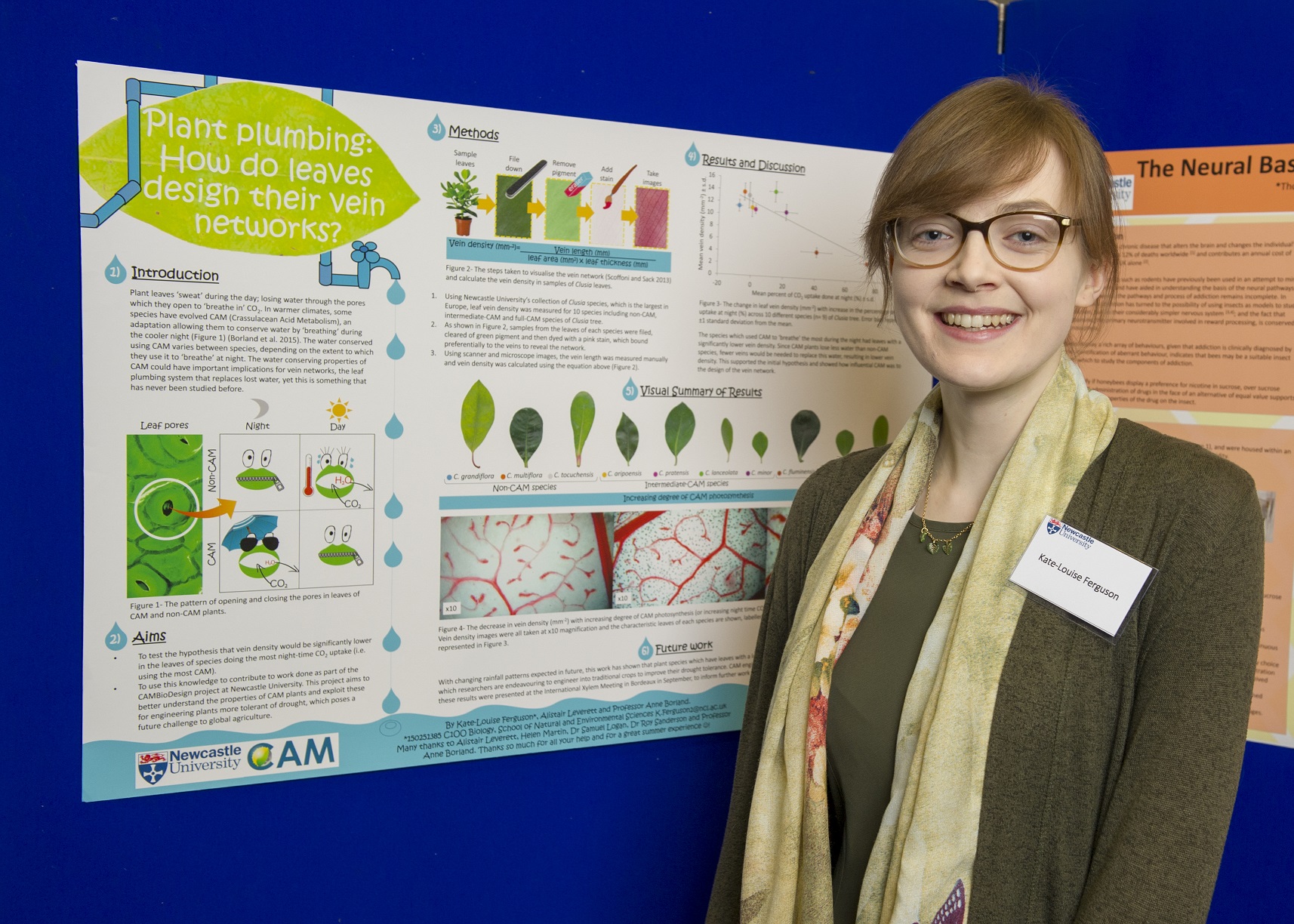2017 Participants
 Kate-Louise Ferguson
Kate-Louise Ferguson
Plant leaves sweat in day-time temperatures; losing water through the pores which they open to ‘breathe’. This has led to the evolution of CAM, an adaptation allowing some species to conserve water and tolerate drought by ‘breathing’ during the night, when it is cooler. As CAM plants minimise water loss, it was hypothesised that they would have lower leaf vein density; as fewer veins will be required to replace the water that is lost. Vein density was measured for 10 species of non-CAM, intermediate-CAM and full-CAM species of Clusia tree. The species which used the most CAM to ‘breathe’ more during the night had leaves with a significantly lower vein density, which supported the hypothesis. With changing rainfall patterns expected in future, this knowledge will help researchers to choose host plants with suitable vein networks for engineering CAM into drought sensitive crops. This will make for a more sustainable future.
Funding source: Newcastle University
Supervisor: Prof Anne Borland
